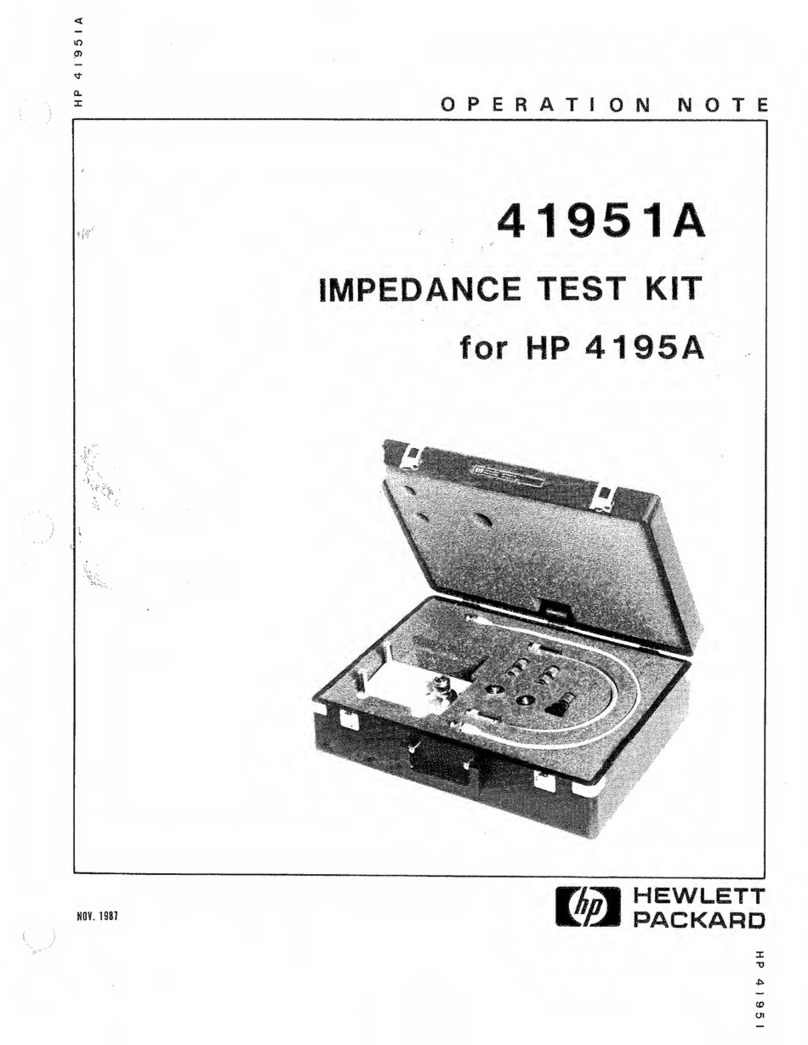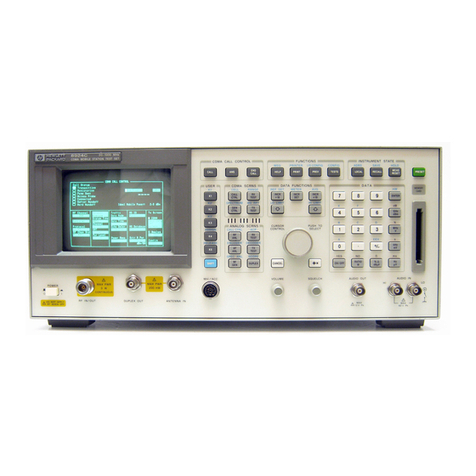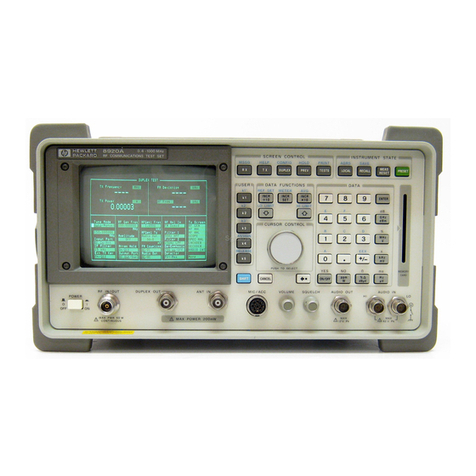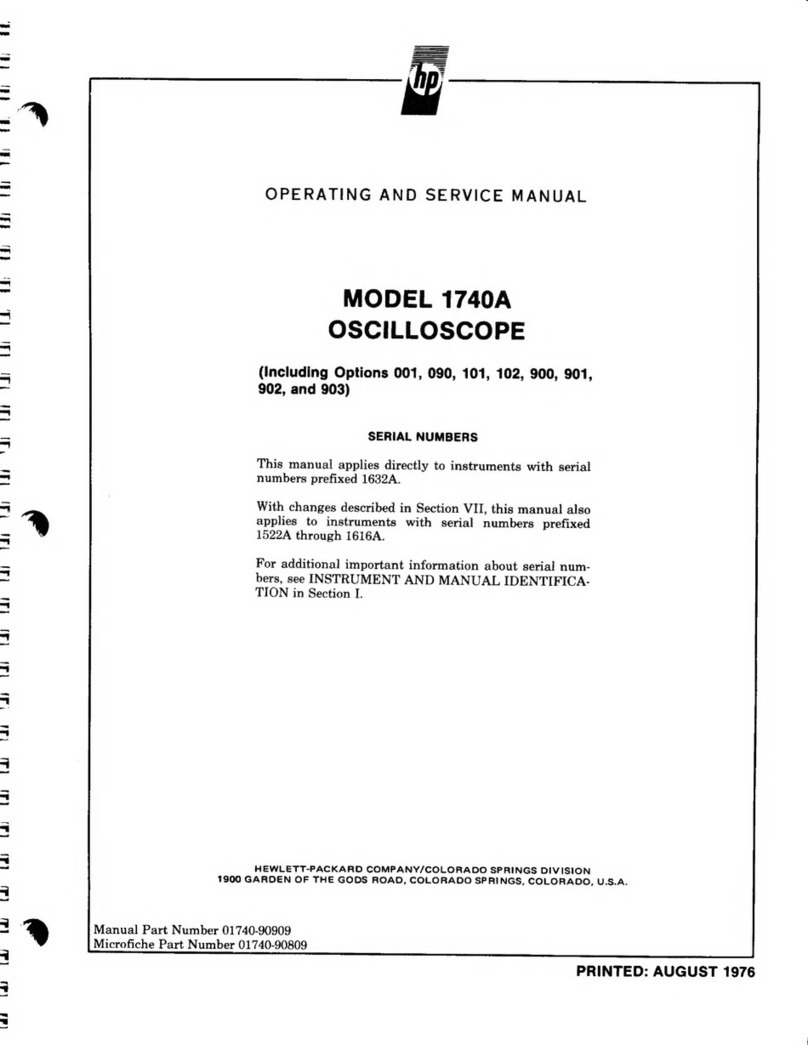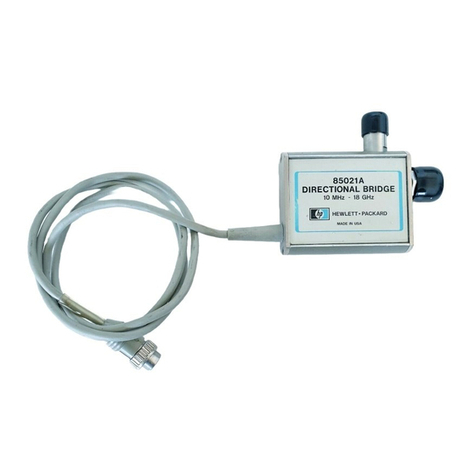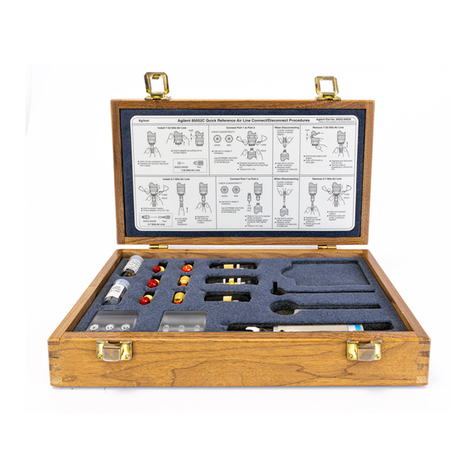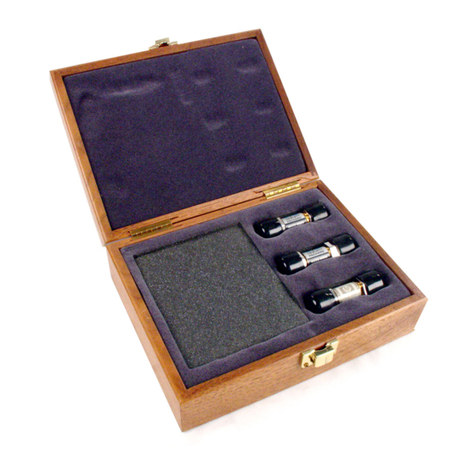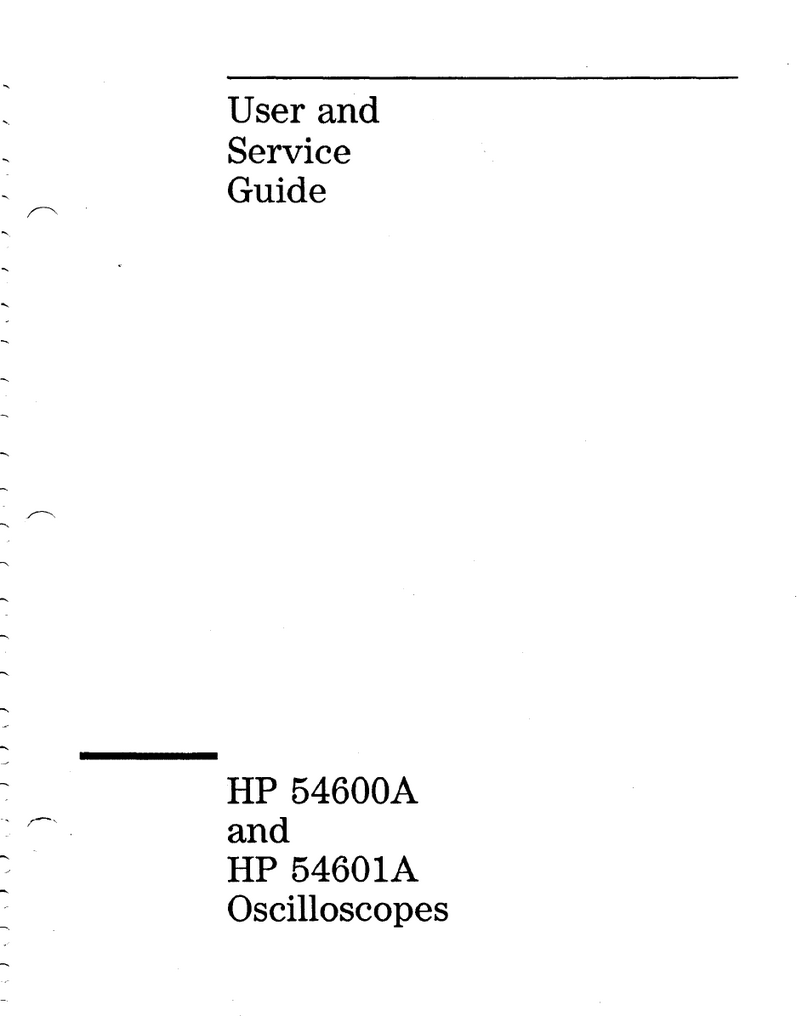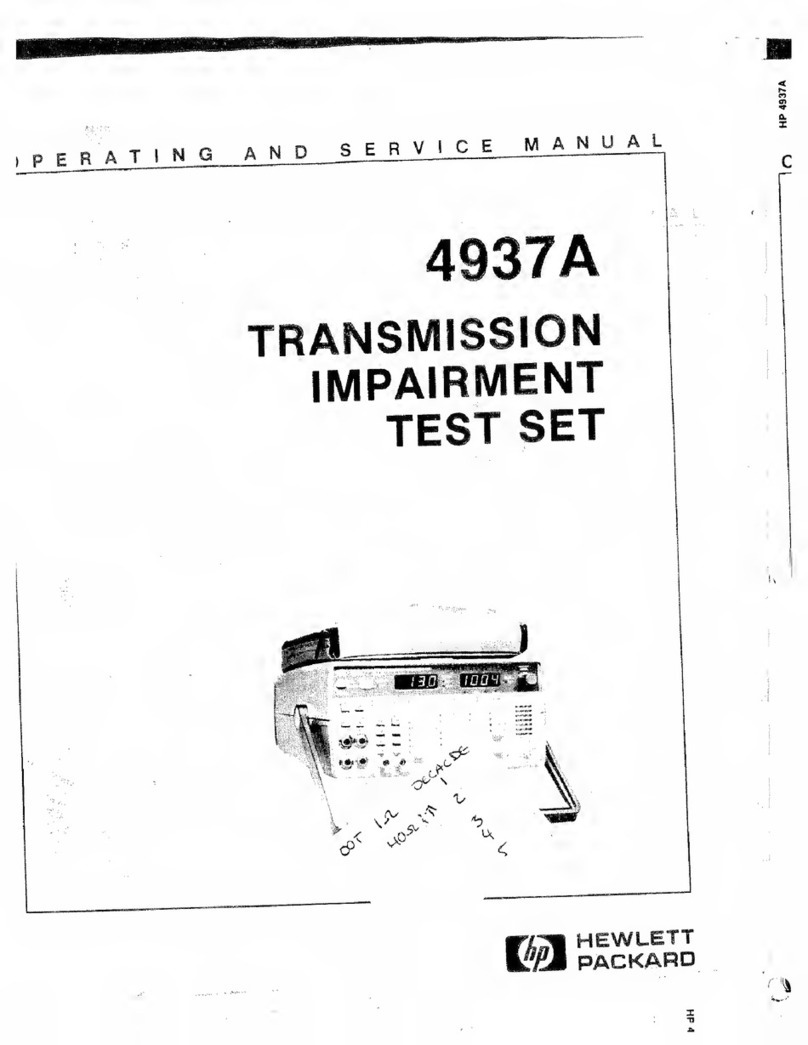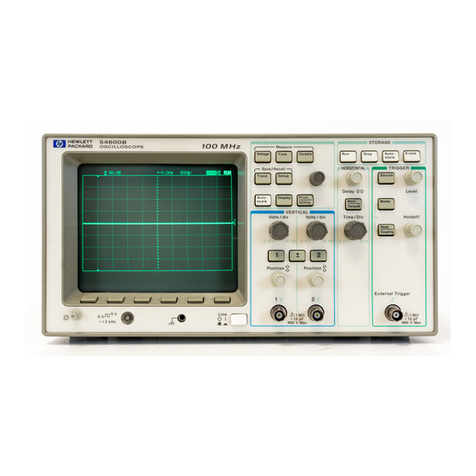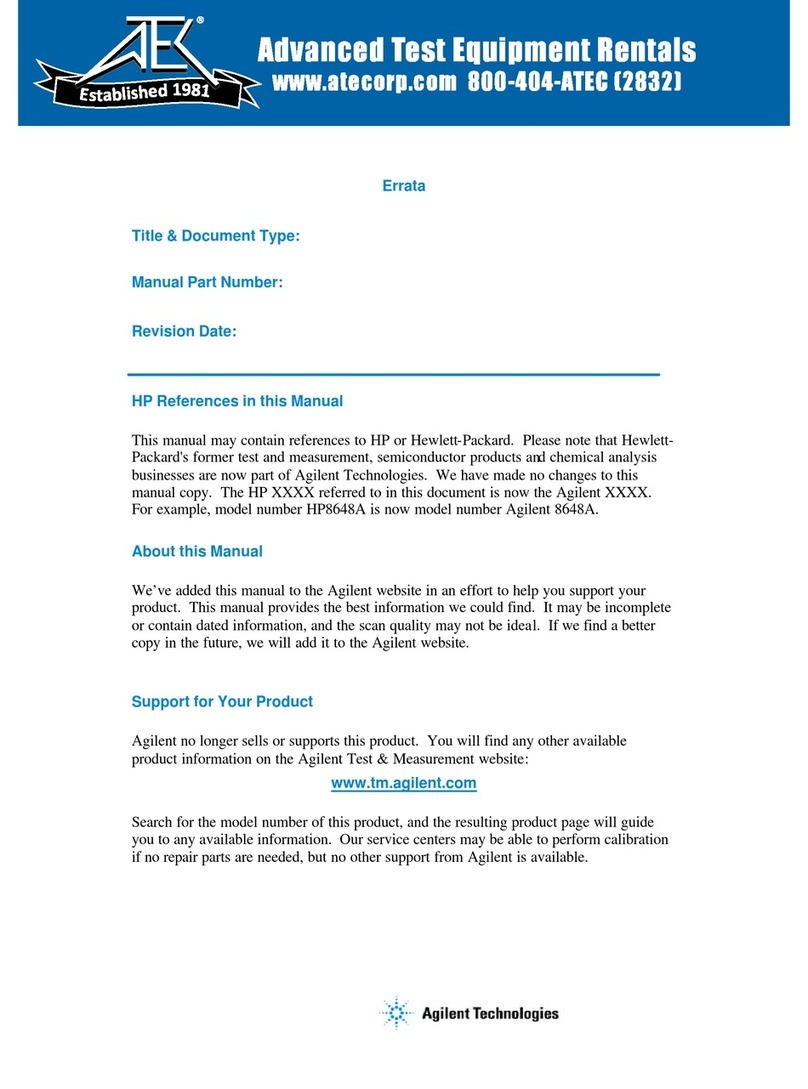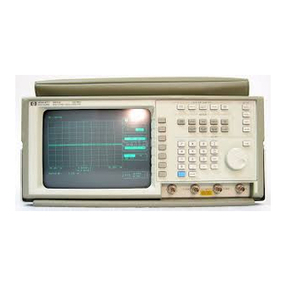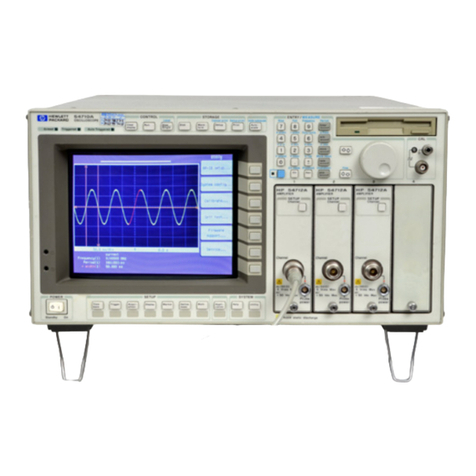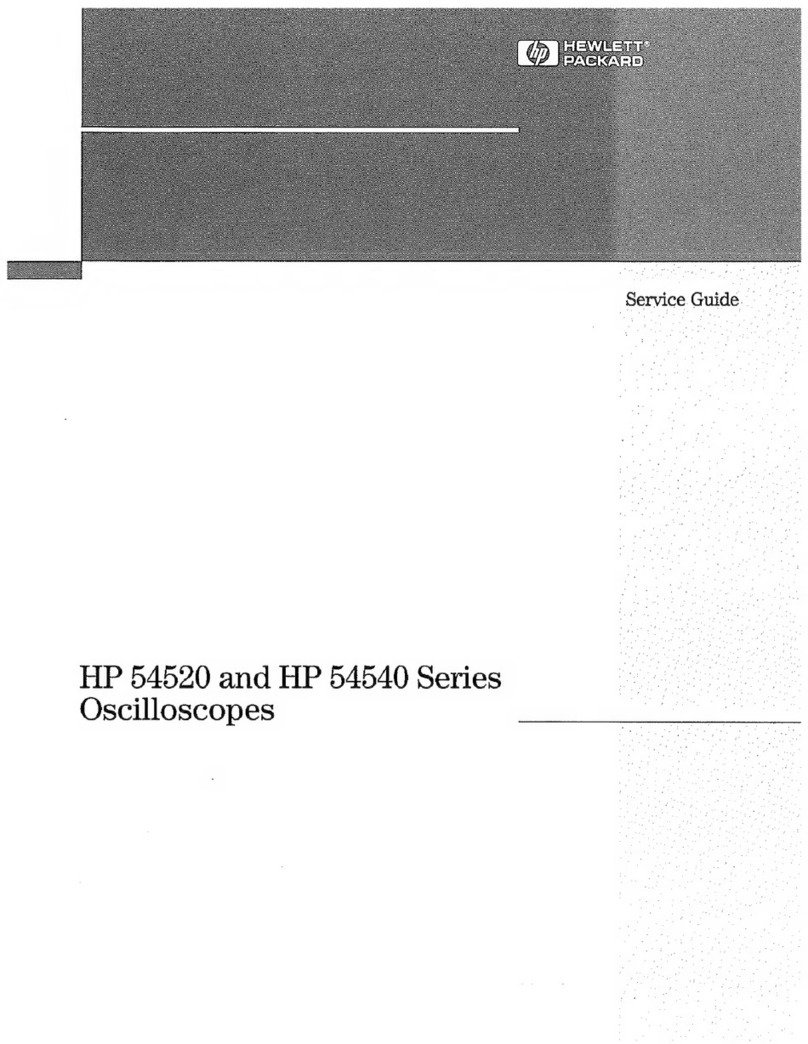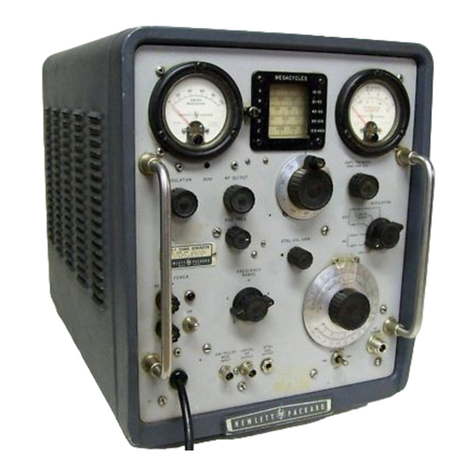The HP 54645A/D at a Glance
Displayshows current input signals
•Eighteen (18) channelsin main mode;
2 scope and 8timing channels in
delayed mode (HP 54645D)
•Indicatorsfor peak, avg, or normal
acquisition,timebase,channel
activity, trigger andacquisition status
•Softkey labels
•Measurement results
Channel Controls select, position, and
labelinputs
•Turn channels onor off individually
or in groups of 8 (HP 54645D)
•Rearrange order ofchannels to
group related signals (HP 54645D)
•Create and display labelsto identify
channels (HP54645D)
General Controls measure, save and
restore results,and configure the
oscilloscope
•Make automatic timeand frequency
measurements
•Usecursors to make manual
measurements
•Save or recall measurement
configurationsor previous results
•Autoscale performssimple
one-button setup ofthe oscilloscope
Horizontal Controls select sweep speed
and delay parameters
•Sweepspeedsfrom5 nsto50s/div
(2 ns to 50s/div for HP54645A)
•Delay control moves waveform
display topoint of interest
•Delayed mode and delay allow
zooming in to showa portion of
waveformindetail(splitscreen)
Storage Keys beginand end data
acquisition
•Run/Stopstartsand stopscontinuous
acquisitions
•Single performs oneacquisition
•Autostore accumulates and displays
the results of multipleacquisitions
•Erase clears the current acquisition
andall accumulated data
TriggerKeys define what data the
oscilloscope willtrigger on
•Source key (HP54645A) allows
conventional oscilloscope triggering
•Edgemode allows triggering on a
positive or negativeedgeof any
single channel (HP 54645A/D)
•Patternmode allowstriggering on a
pattern ofchannels eitherhigh,low,
or don’tcare,with an optional single
edge qualifier (HP 54645D)
•Advancedmode allowssequential
triggers, combined patterns, patterns
andedges,patterndurations,glitch
(HP 54645A/D), and TV (HP 54645D)
Softkeys extend the functionality of
command keys
Selectmeasurementtypes, operating
modes, trigger specifications,label data,
and more
Channel Inputsthrough a flexible
probingsystem
•Sixteenchannels through a dual
8-channelcable with micro-grabbers
(HP 54645D)
•Set logic levels as TTL, CMOS, ECL,
or to a user-definable voltage
(HP 54645D)
ii












